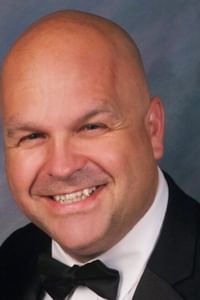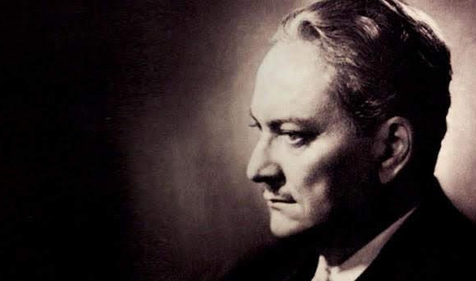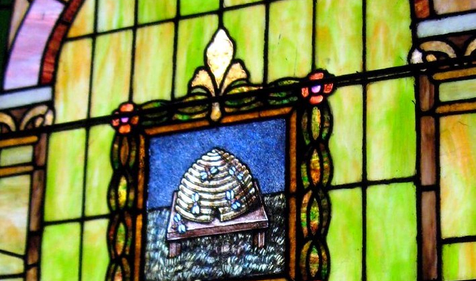The Grand Lodge of Ohio is using digital portals to reach new Masons and keep members engaged with the fraternity.
Men want to be part of something greater than themselves. Earlier this year, as a part of The Path Forward initiative, the Supreme Council of the Scottish Rite, NMJ conducted the largest study of the Craft ever done. It centered on one key question:
“Based on your current knowledge of Freemasonry, would you consider joining?”
Supreme Council posed this question directly to 3,500 American men (all non-Masons) and they answered with a resounding yes. The tenets and the values of what Freemasonry stands for — tolerance, integrity, charity, and a reverence for our longstanding history — remain appealing to men today.
So how do we reach these men? It is not as complicated as you may think. In the case study below, the Deputy Grand Master of Ohio, Right Worshipful Brother William Carter III, 33°, recounts the replicable techniques they have used to successfully grow Ohio’s Brotherhood and reach the next generation of Masons.

In the Grand Lodge of Ohio (GLOH), we see it as our job to meet prospective Freemasons in the spaces where they spend their time so we can tell our story. And for millennial men, that means connecting with them online. This is clear from BeAFreemason.org, which the Scottish Rite, NMJ launched in 2020. Over 120,000 “leads” — men inquiring about joining the Craft — have been sent to Grand Lodges across the United States and Canada through the website’s referral portal.
Growing Freemasonry in the Digital Age
Every single one of those leads is a real man eager to begin his journey into Freemasonry, yet 83% have not been contacted by a Masonic representative. Many Grand Lodges and local lodges struggle to follow up with prospective Masons’ online inquiries. Whatever the reason is, changing our thinking about these digital portals is essential to building a strong future for Freemasonry.
In Ohio Freemasonry, we realized these individuals are making an emotional investment by reaching out to us. GLOH has decided following up with these men is a top priority and has invested the proper time and resources, just as any other organization does to grow its membership base.
All we had to do was adopt the marketing and member engagement practices the Supreme Council has used to grow the Scottish Rite membership and implement it at the Grand Lodge level. The success we’ve seen has shown us that using digital portals is now necessary and possible for finding new Freemasons and engaging with current members. Our program is now proven to cultivate membership and any Grand Lodge can replicate it.
Email Marketing with Grand View
As Freemasons, marketing is a critically important tool that allows us to tell our story in a way that is digestible. For us, email marketing allows us to share who we are and what we stand for and convert interested men into full-fledged Freemasons.
We use Grand View at GLOH, an excellent platform that allows us to communicate with all our members. When men reach out to us on BeAFreemason.org or the Grand Lodge website to inquire about joining, we use emails from Grand View to tell our story and teach them about the Masonic fraternity. We call this our “email nurture series” and it has been very successful; prospects open over 50% of all the emails we send out, greatly outperforming the industry standard of 37%.
Here is the journey a man goes through when he asks about becoming an Ohio Freemason online:
Step 1 – Lead
A man becomes a lead when he submits his email to us online so he can learn more about Freemasonry. He can do this on either The Grand Lodge of Ohio “Join” page, an ad landing page (found on social media), or BeAFreemason.org. We ask for his name, email address, and zip code which helps us vet the person. We then begin sending him welcoming, easy-to-understand content about the fraternity via email and invite him to submit an inquiry to a local Lodge. We attempt to engage by sending one email a week for nine weeks.
Our emails discuss topics such as:
- Who Freemasons are
- The local Masonic scene
- The Lodge experience
- The benefits of joining
- Self-improvement
- The History of Freemasonry
- Masonic symbolism
Step 2 – Prospective Member
Once a lead submits an inquiry form, they become a prospect. This is the phase where the engagement deepens as the individual is now willing to volunteer more information and they’re interest is sparked.
At this phase, we ask for more information, including:
- His phone number
- Birthday (to confirm they meet the age requirement)
- Occupation
- How they found us
- What their interests are
In response, we begin sending them regular informational emails about what they can expect from the petition process. If the local Lodge accepts the petition, we then move the petitioner to our list of new members. This is a critical stage because you must emphasize the commitment that comes with being a Freemason but do it in a way that isn’t overwhelming. For those men we can turn into a petitioner, 87% of them go on to become an Entered Apprentice.
Step 3 – New Member
When a man makes the transition into becoming a new Freemason, it can be a disorienting time. He is essentially getting exposed to an entirely new culture. We think carefully about how we can help acclimate new members to that culture, not just in this nurture email process, but in the Lodge as well. As a new Brother completes each degree, we send him congratulations over email and preview the next degree to help encourage and guide them along their journey.
Step 4 – First-Year Onboarding
Once a new Brother becomes a Master Mason, we do not treat it as a finish line. We continue the onboarding process for a year after a man completes the Third Degree, providing monthly emails to educate and engage them so we can help them grow in the Craft. This final stage is designed to ensure new members acclimate to Masonic culture and feel empowered to get involved.
Making Real Connections
Our digital engagement program at GLOH is complemented by a robust membership program composed of on-the-ground Freemasons helping guide individuals along. Let’s look at the role they play in helping convert men from lead to new Mason.
- Lead to Prospect: We’ve observed that the conversion rate from lead to prospect is about 58%. In the Grand Lodge of Ohio, we have a Program Manager who works with prospects. When a man moves from lead to prospect, GLOH’s Program Manager identifies where he resides and shares his information with the district he lives in.
- Prospect to Petitioner: Each district (there are 25 in Ohio) has a Prospect Manager that receives prospect information and is responsible for beginning a more personal engagement. Depending on the prospects preference this is usually a phone call or text message that allows us to not only vet the prospect, but open the door for a deeper, more meaningful engagement. After they’ve had the opportunity to interact with the individual, the Prospect Manager works with Lodges in the district to find a place for that individual. Rather than focus on sending a prospect to the Lodge closest to them, we want to make sure they find the one that is the best fit.
- Petitioner to New Member: Once the lodge is identified, it’s up to the prospect to petition to join. The conversion rate from prospect to petitioner is about 17%. While that number may seem low, it’s critical to understand this is the biggest moment in their journey to Freemasonry. This is the moment a man decides to invest in himself. Once a man petitions, a Lodge Prospect Manager becomes the contact point for this individual until they complete the First Degree. Each Lodge handles the induction of a new Brother differently, but once an individual petitions, 87% of men go on to become an Entered Apprentice. From here, the number drops to 69% of men who progress to Fellowcraft, a trend that raises some questions about why a man may not return.
Fulfilling Our Promise
If 69% of men progress to Fellowcraft, why did the other 31% fail to do the same? Did the lodge fail to engage these new Brothers? Did life get in the way? Whatever the reason is, we have to think carefully about what we can do in and out of the Lodge to show the value of Freemasonry. Of the men that come back and complete the Second Degree, 90% go on to become a Master Mason.
As helpful as our email nurture series can be in ushering new members into the Masonic community, nothing is more crucial than the Lodge experience. What we do in and outside of the Lodge to continually acclimatize a new Brother to the Masonic culture is essential to getting their engagement.
People make time for the things that are valuable to them. As Grand Lodges, we have to provide something valuable to the men interested in joining our Brotherhood. We need to create an emotional investment in our new members that demonstrates why Freemasonry is the right fit for them.
It’s a Grand Lodge’s job to foster engagement with our members, and our email nurture series is designed to help deepen a Masons connection with the Craft. However, it’s a meaningful Lodge experience that keeps a Mason coming back year after year.
The Future of Freemasonry
The recent research from the Scottish Rite, NMJ reveals that millennials are now the target market for Freemasonry. 77% of millennials would consider joining once they’ve learned more about Freemasonry. The data shows their key values are loyalty, equality, and responsibility, and the Craft is a great opportunity for them to find fulfillment.
Our success at the Grand Lodge of Ohio shows that we must meet them online. Millennials use the internet as a means of discovery. When inquiring about Freemasonry online, they do so with the expectation that there is someone on the other side of the screen, ready tell them more.
Operating in the digital realm is new for Freemasonry, but it is the world we live in today. If we make assumptions, don’t take these men seriously, and refuse to engage those individuals who reach out online, we will not be able to sustain our Brotherhood and the future of Freemasonry.
If you are interested in learning more about beginning a digital program, the Scottish Rite, NMJ has prepared several downloadable books on Masonic Marketing. Our free e-book Follow-up: Freemasonry’s Not-So-Secret Weapon teaches Masons what effective follow-up looks like and why effective follow-up strategies are so critical to growing our fraternity.
Related Stories
Discover additional Scottish Rite blogs and news on this topic.
-
Manly P. Hall: Philosopher, Mystic, and Freemason
Famous Masons
Read More about Manly P. Hall: Philosopher, Mystic, and Freemason
-
What Does the Beehive Mean in Freemasonry?
Degrees
Read More about What Does the Beehive Mean in Freemasonry?
-
Was Robert Burns a Freemason?
Famous Masons
Read More about Was Robert Burns a Freemason?


